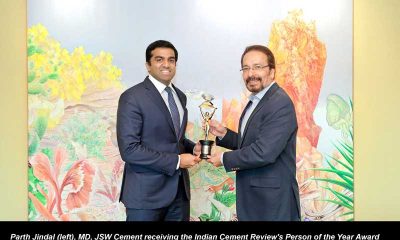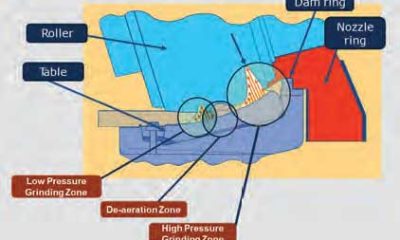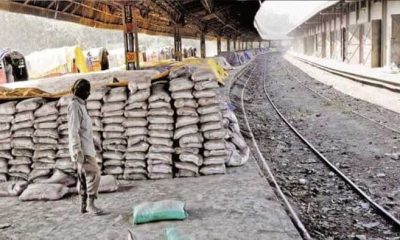Technology
Nord Drivesystems in Alps
Published
3 years agoon
By
admin
Heavy duty work for industrial gear units from Nord Drivesystems in the Alps
In an extremely demanding construction project in the Swiss Alps, at an altitude of around 1700 m and almost 600 m inside a mountain, large chambers are being excavated to form the new expanded underground centre of a pumped storage hydroelectric power station that will increase its present power output from 480 mw to 1480 mw. With an extreme incline of 45 degrees and a height difference of approximately 180 m, conveyor systems in a sub-station are transporting 500 tonne of excavated material per hour, around the clock, using conveyor belts that are driven by Nord industrial gear units.
The expansion project "Linthal 2015" will upgrade three existing power station systems and increase their overall output power from 480 mw to 1480 mw. A new underground pumping station will drive water from a lower reservoir at an altitude of 1860 m into a lake reservoir which is about 600 m higher. The pumped storage power station will use this elevation difference to produce hydroelectric power on demand. The client for this project is Kraftwerke Linth-Limmern AG, a part of Axpo Holding AG.
The power requirements of a national electricity grid are subject to large fluctuations over the course of a single day. At night, power consumption is at a minimum and typically reaches a peak at midday and in the evening. In Switzerland, electric power is mainly supplied by nuclear and river-based hydroelectric power stations. Biomass and conventional thermal power stations also make a contribution. In contrast to nuclear and river-based plant, pumped storage hydroelectric power stations can rapidly respond to changes in demand. The optimum interplay between these various types of power generation technologies ensures that a reliable and economic power supply is maintained around the clock.
Pumped storage stations assure peak-time energy: Unlike pure storage power stations, pumped storage stations cannot just generate energy at peak times; they can also convert excess power, which is generated during periods of low demand, into valuable peak-time energy. The demand for peak energy is continuously increasing throughout the entire European grid network. Apart from the general increase in annual consumption, another important reason for this is the intensive development of wind energy in the coastal regions of the European Union. This factor results in an increase in the so-called stochastic energy, which depends on random wind conditions and therefore cannot be reliably planned. If power from wind energy is generated in times of low demand, the excess can be used to pump back water into the higher reservoirs of pumped storage power stations. If there is no wind during the day, pumped storage power stations can then cover this power deficit. A further reason for the increasing demand for peak energy is the opening of the electricity market. As power can be purchased by consumers from anywhere on the free market, power distribution networks must increasingly be regulated by system services, which ensure a reliable supply.
Pure hydroelectric power stations have an upstream reservoir. In contrast, pumped storage plants have an additional lower reservoir. If power is generated, water from the upper reservoir flows into the pressure system. The water drives turbines, which in turn power the motor generator. The electrical power which is produced is fed into the grid. After leaving the turbine, the water flows into the lower reservoir. If too much electricity is produced, the water can be pumped back from the reservoir into the higher altitude lake, from where it can be used at a later time to generate electricity. Pumped storage power stations can therefore store energy in the form of water in reservoirs. Pumped storage is a well-established method of compensating for fluctuations of supply and demand in the grid network, in an environmentally friendly and economic manner.
The scope of the project "Linthal 2015" includes excavation and construction work for the underground central station of the pumped storage power station and the tunnel system for the water that provides the power. Construction of a new heavyweight dam for the higher lake will increase its storage volume from the present 9 to 25 million m³. Expansion work for the existing compensating reservoir is also included. Construction work on Switzerland’s largest hydroelectric project is being carried out at considerably different altitudes and inside of the mountain. The compensation reservoir at an altitude of about 800 m is the lowest point. One thousand metres above this is the upper reservoir Limmernboden with a capacity of 92 million m³. At an altitude of about 1700 m and some 600 m inside the mountain, the heart of this gigantic expansion project is being created with huge excavated chambers that will house underground stations for the four groups of machinery used in the new pumped storage power facility Limmern. The underground station consists of a 150 m long, 30 m wide machinery chamber with a maximum height of 53 m, as well as a separate transformer vault which is about 130 m long, 20 m wide and 25 m high. This central station creates the link between the two lakes via a system of upper and lower water delivery tunnels, parallel pressure shafts and other service tunnels. Personnel, materials and machines are transported to the construction site using a cable railway with a load bearing capacity of 25 tons.
The excavation work for the two chambers is completed. The work has been proceeding rapidly in an intensive 24/7, 3-shift operation. The chambers have been excavated from above and below; every day about 800 m³ of rock has been removed from the mountain and in total almost 2,445,000 m³ have been excavated to form both chambers.
Drive systems for conveyors
Industrial gear units are used in the conveyor systems which are located in the central area of the construction project "Linthal 2015". Two "S-conveyors" convey 500 t of material per hour over a distance of about 260 metres with an extreme incline of 45 degrees and a height difference of around 180 m. The excavated material is conveyed down to a crushing plant. This conveyor belt is driven by a NORD industrial gear unit with brake control, which simultaneously generates electricity. On the second conveyor belt, the crushed material is conveyed up to the gravel plant, where it is stored until it is needed for further processing as construction aggregate for the dams or as concrete for walls and ceilings. This conveyor has a belt speed of 2.2 m/s and is driven by two NORD industrial gear units, located at the right and left of the conveyor system and connected by a common shaft. With a protection class of IP55, these industrial gear units each have a drive power of 250 kw.
The industrial gear units for this massive construction project were developed according to the tried-and-tested UNICASE principle. The UNICASE is a one-piece housing block, into which all the bearing seats are integrated, with production carried out in a single stage using state-of-the-art CNC machines. The concept features extreme precision, rigidity and strength with no joints between the output side and the gear unit which are subject to radial forces or torque. The UNICASE principle enables a more compact design due to the staggered arrangement of the shafts and also allows the use of larger roller bearings that guarantee a long operating life. Industrial gear units can be right or left mounted.
Customer-oriented drive solution
The supplier of this complete drive solution was Getriebebau NORD AG, Switzerland – a member of the NORD DRIVESYSTEMS Group. Customer orientation and closeness to customers are particularly important for the drive specialists from Arnegg, near St. Gallo. Guido Eigenmann, Manager of Getriebebau NORD AG, Switzerland explains: "We sell customer benefits – not just products. As well as this we offer a comprehensive service package. In addition to commissioning, we also provide maintenance training, so that the customer knows what to look out for. It is particularly important for us to supply complete systems which are highly efficient and economical. Many users require not just drive components, but rather complete and functioning system solutions. We tailor our drive solutions to each individual customer." The plant constructor and customer of Getriebebau NORD is Marti Technik AG, which was founded in 2002 and is one of the many subsidiaries of the Swiss Marti Holding AG. Marti Technik AG is a provider of individual tailor-made solutions, principally focussed on underground construction work. Building on its many years of experience gained on large construction sites and third party projects, the company predominantly specialises in the field of tunnel boring systems, conveyor technology, switchgear construction, as well as electrical engineering. Ernst Kuster, head of maintenance and responsible for the conveyor systems is very satisfied with NORD products and services. "The very good cooperation with Getriebebau NORD Switzerland is particularly positive for me. All of our requirements were catered for. What is also remarkable is the high ability to supply. It only took about ten weeks from ordering to delivery. With other suppliers, four or five months are not unusual. All-in-all we are very satisfied – a very good cost-benefit ratio, excellent advice and support, on-schedule delivery and last-but-not-least, NORD products deliver a very high performance and are of very good quality.
You may like
Economy & Market
We are shaping the future of clean air
Published
2 days agoon
April 16, 2024By
admin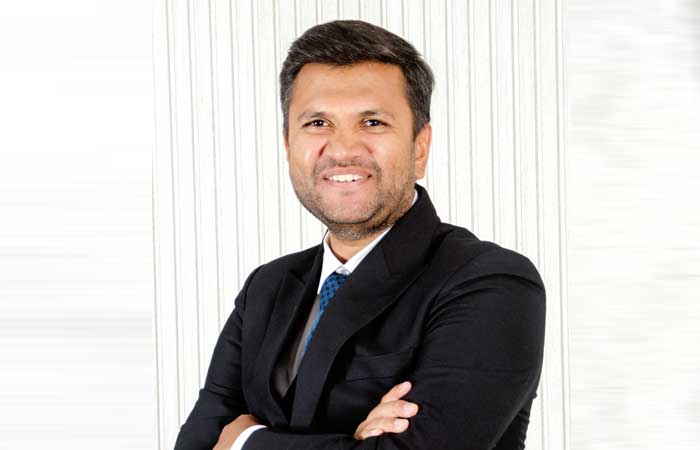
Monil Parikh, Managing Director, Techflow Enterprises Pvt Ltd, leads us to a better understanding of how cutting-edge designs and advanced technologies are revolutionising the process of filtration, driving efficiency and environmental responsibility within the cement sector.
Tell us about your air pollution control systems.
Techflow Enterprises, operating from our expansive 30,000 sq m facility, which is one of India’s largest, manufactures a comprehensive suite of air pollution control systems specifically designed for cement plants. Our solutions include:
Pulse Jet Bag Filters: Employing compressed air for efficient cleaning, these capture fine dust particles generated during grinding and packing. Techflow’s bag filters are designed to restrict the outlet emission up to 5mg/Nm3.
Electrostatic Precipitators (ESPs): Ideal for ultra-fine particulate matter in kiln exhaust gases, ESPs utilise an electric field for superior dust capture with 99.9 per cent capacity.
Centrifugal Fans: We offer various fans like induced draft (ID) fans for draft creation, process fans for dust-laden air transport, and kiln fans for high-temperature gas streams.
Techflow’s commitment to quality is evident in our proven track record. We are actively supplying solutions to leading cement players like Adani Cements, Ambuja and ACC Cement, Dalmia Bharat Cement and Wonder Cement. Our installations across India and Asia stand as a testament to our expertise in handling cement plant dust control challenges.
How do your products and systems integrate with cement plants?
Techflow’s air pollution control systems seamlessly integrate into your existing cement plant. Our pulse jet bag filters fit effortlessly downstream of grinding mills and packing stations, effectively capturing fine dust particles generated during these processes. Electrostatic Precipitators (ESPs) excel in kiln exit gas streams, working alongside existing cyclones to achieve ultra-fine particulate control, a critical step in maintaining clean air emissions.
Techflow’s comprehensive offering of centrifugal fans ensures a perfect fit for any application. Our ID fans seamlessly integrate into the kiln system, creating the necessary draft to pull exhaust gases through the air pollution control equipment. Process fans, strategically placed throughout the plant, efficiently convey dust-laden air from various generation points, like clinker coolers and raw material handling, towards the filtration units. This modular approach minimises disruption during installation and ensures optimal dust collection across your entire cement production process.
How do your innovative designs better the process of filtration at cement plants bringing efficiency to the process?
Techflow’s commitment to innovation translates to superior filtration efficiency and operational cost savings for cement plants. Our pulse jet bag filters incorporate features like:
- High-efficiency filter media: Designed for specific dust types, this media minimises pressure drop across the filter, reducing energy consumption.
- Improved flue gas entry design
- Low Pressure Cleaning Systems
- Optimised pulse cleaning systems: These systems efficiently dislodge dust cake buildup using compressed air, maximising filter media life, and minimising downtime.
Our ESPs utilise advanced electrode designs to enhance particle collection and reduce maintenance intervals. Furthermore, Techflow’s centrifugal fans are meticulously crafted for superior aerodynamic performance, leading to lower energy consumption and improved overall plant efficiency.
Techflow has developed a SMART-LINK automation module for better maintenance and real-time remote tracking of performance of each equipment. Cement plants equipped with Techflow’s systems experience reduced operational costs, minimised downtime and compliance with ever-evolving environmental regulations.
What is the key differentiator between traditional filters and modern filters?
Traditional bag filter systems often relied on manual cleaning methods, leading to inconsistent performance, increased downtime, and potential worker exposure to dust. Modern pulse jet bag filters, like those offered by Techflow, address these limitations.
Our systems leverage automated cleaning mechanisms, ensuring consistent filtration efficiency and minimal operator intervention. Additionally, advanced filter media materials in Techflow’s bag filters offer superior dust capture capabilities compared to traditional fabric filters.
This commitment to modern technology translates to a safer and more efficient and environmentally friendly dust control solution for cement plants.
Can your designs be customised as per the requirement of the customers?
At Techflow, we understand that every cement plant has unique dust control requirements. That is why we prioritise customisation across our entire product range:
Pulse Jet Bag Filters: Filter media type and micron rating based on dust properties, number of filter bags, and pulse cleaning system configuration like cycle time and pressure can all be adjusted to optimise performance for your specific dust and airflow. The system can be designed to achieve less than 5mg/Nm3 outlet emission standards as well.
- Electrostatic Precipitators (ESP): ESP design can be customised with features like the number of electrode rows, electrode spacing, and power input like voltage and current to achieve the desired dust collection efficiency for your specific outlet emission capacity less than 20mg/Nm3.
- Centrifugal Fans: Fan designs are tailored by adjusting factors like impeller diameter, blade design, and motor size to meet the specific pressure and flow requirements of various processes within a cement plant.
This focus on customisation ensures Techflow’s air pollution control systems perfectly match your cement plant’s needs, guaranteeing optimal dust capture and efficient operation.
What is the role of technology and automation in building filtration systems?
Techflow has designed a SMART-LINK System that can be integrated to our equipment which tracks and monitors performance of equipment in real time.
- Continuous diagnostics
- Condition-based maintenance
- Prevention of unplanned downtime
- Early problem detection using AI
- Data collection for process optimisation and efficiency maximisation
- Auto alert with warning driving timely human interactions
- Remote maintenance assistance by Techflow Team.
What are the major challenges in the filtration process and your system integration at cement plants?
The cement industry’s focus on sustainability, higher production and diverse fuel sources creates filtration hurdles. Adapting to changing dust properties, handling increased dust loads, and integrating seamlessly within space constraints are key challenges.
Techflow tackles these issues through advanced design techniques, exploration of innovative filter media, and modular system design. This ensures our filtration systems remain adaptable, efficient and seamlessly integrated within your cement plant, empowering your success.
How do you plan to further better your products and bring innovation in the future?
At Techflow, we are not just building filtration systems, we are shaping the future of clean air in the Indian cement industry. After successful expansion of the manufacturing facility in 2023, now it is time to improve designs and process optimisation. The future holds exciting possibilities: next-generation filter media with self-cleaning properties and
extended lifespans, minimising maintenance and maximising efficiency.
Techflow’s legendary after-sales support is about to get even better. We are expanding our global service network to provide you with 24/7 access to a team of India’s most experienced filtration specialists, ensuring your system operates flawlessly throughout its lifecycle.
Together, we will lead the way towards a sustainable future, paving the path for a greener tomorrow with green cement.
- –Kanika Mathur
Economy & Market
Digitalisation is changing the logistics landscape
Published
2 days agoon
April 16, 2024By
admin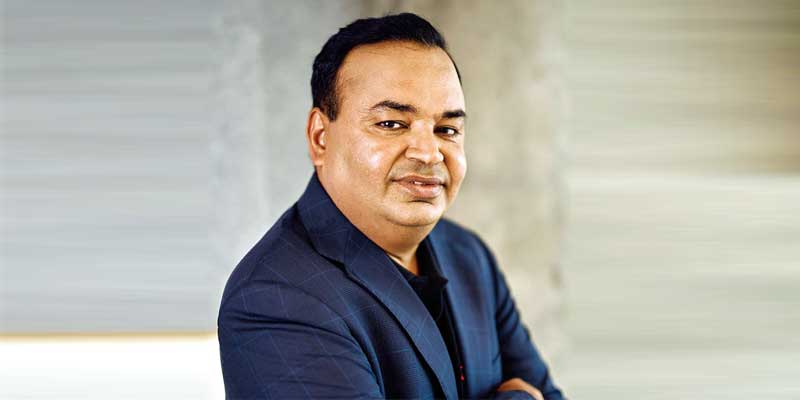
Haresh Calcuttawala, CEO and Co-Founder, Trezix, explains how their platform streamlines export processes, optimises logistics operations, and addresses the challenges faced by the cement industry.
How does your platform help in the compliance of cement exports?
The Trezix platform helps with the end-to-end processes for exporters, ensuring complete visibility of these processes focusing on shipments, documents, compliances, etc. The platform is also integrated with various stakeholders’ part of the export process including integration with Unified Logistics Integration Platform (ULIP) by the Government of India.
What is the impact of your systems on the cost and productivity of a cement plant?
The Trezix platform helps to optimise the turnaround time, visibility of shipment and improving efficiencies, which results in optimisation in logistics cost and improvement in working capital.
What are the major challenges in logistics and how can that be resolved?
A major challenge in the cement industry is the logistics cost and time for delivery. This can only be resolved with faster turnaround time, complete visibility of shipments, delivery lead time and process control to adhere to compliance.
Tell us your views on the change technology is bringing to logistics.
In the cement industry, so far technology has been more focused on internal process, and optimising demand and supply in the area of supply chain. However, now the focus has completely shifted to external stakeholders and their processes, and how have we integrated processes to further optimise the logistics execution.
Can your systems and solutions be customised based on customer requirements?
Every customer has some unique value proposition for their customer segment. Trezix has flexibility by way of configuration to adhere to industry needs and specific customer needs, keeping in mind the regulatory processes are not deviated to fulfil statutory requirements.
How do you foresee the face of logistics changing for the cement industry?
Digitalisation is one of the biggest waves you can see in the logistics space, which is changing the face of the industry. Digitalisation is changing the logistics landscape. Various concepts like Just In Time (JIT) to customer delivery are now a reality. Vehicle utilisation, fuel efficiency, delivery visibility, vehicle tracking through RFID, Fastag, FOIS (rail receipt tracking), container/cargo tracking across geography is now a reality.
- –Kanika Mathur

Ankit Kumar, Co-Founder and CEO, Skye Air, highlights the advantages of drone deliveries for the cement industry to improve the overall operational efficiency and cost-effectiveness of the supply chain.
What is the environmental impact that drone deliveries can create?
Drone deliveries have the potential to significantly reduce environmental impact compared to conventional delivery methods. By utilising drones, the carbon footprint of last-mile delivery can be slashed by eliminating the need for vehicles and vans, which emit greenhouse gases during transport. In fact, studies have shown that drone deliveries can reduce carbon emissions by up to 80 per cent compared to traditional delivery methods. Additionally, drones provide more direct routes, minimising congestion and further lowering emissions.
Furthermore, Skye Air’s implementation of drone technology can contribute to a substantial decrease in air pollution. Traditional delivery vehicles, powered by fossil fuels, contribute significantly to air pollution, whereas drones operate on cleaner energy sources, such as electricity. As a result, the adoption of drone technology by Skye Air could lead to a notable reduction in harmful pollutants released into the atmosphere.
It’s worth noting that Skye Air is committed to continuous monitoring and optimisation of its operations to ensure that the environmental benefits of drone delivery are maximised. Through data-driven analysis and innovative strategies, Skye Air aims to further enhance the efficiency and sustainability of its drone delivery services.
In conclusion, while drone deliveries offer significant environmental benefits, rigorous management and innovation are essential to mitigate any potential negative effects and ensure the long-term viability of drone delivery operations.
Tell us about the efficiency created by drone delivery systems.
Skye Air has spearheaded a paradigm shift in the logistics industry by substantially augmenting efficiency in their drone deliveries. Drones can help circumvent traditional road networks, bypass traffic congestion and surmount logistical impediments, facilitating expeditious and direct transportation of goods. This heightened efficiency is particularly conspicuous in exigent circumstances, such as the delivery of medical supplies to remote regions or the expeditious fulfillment of urgent orders. By harnessing the capabilities of drones, Skye Air optimises delivery routes, curtails fuel consumption, and mitigates the overall operational costs inherent in conventional delivery methodologies.
Indeed, empirical data underscores the efficacy of drone deliveries, showcasing a significant reduction in delivery times by up to 50 per cent compared to traditional methods. Moreover, drone deliveries have been shown to minimise fuel usage by approximately 60 per cent, contributing to substantial environmental conservation efforts.
Furthermore, the automation of the delivery process not only expedites operations but also bolsters efficiency, resulting in enhanced customer satisfaction rates. With streamlined processes and expedited turnaround times, Skye Air sets a new standard for excellence in the logistics domain.
What is the role of digitalisation and technology in your delivery and transport system?
In Skye Air, digitalisation and technology serve as pivotal catalysts in revolutionising our delivery and transport system. Through the integration of cutting-edge drone technology like Skye UTM, we have established a streamlined and efficient delivery process. Our drones are equipped with state-of-the-art navigation systems and sensors, enabling precise and secure delivery routes. Skye UTM stands as the most advanced and indigenised Aerial Traffic Management platform, designed to furnish situational awareness, autonomous navigation, risk assessment, and traffic management to all drone and aerial mobility operators across the airspace. Skye UTM has already facilitated successful BVLOS (Beyond Visual Line of Sight) drone flights. The Skye UTM captures over 255+ parameters of UAV movements, storing them in its ‘Black box’, which comprises a published systematic description of the entire flight. This platform offers the inaugural 3-Dimensional view of the drone airspace, alongside operations and regulations mapping servers, furnishing the latest airspace status, verified paths, and exhibiting real-time UAV movements. Furthermore, our digital platforms empower customers to seamlessly place orders and track their deliveries in real-time. This digitalisation not only amplifies the velocity and precision of our deliveries but also ensures transparency and accountability throughout the entire process.
Can drone deliveries be incorporated with the cement industry in the future?
In the foreseeable future, the incorporation of drone deliveries holds promise for integration within the cement industry, presenting efficient and swift transportation solutions for materials. The sophisticated drone technology prevalent in logistics stands poised to collaborate seamlessly with cement companies, optimising their supply chain operations. Drones can ferry small batches of cement or other construction materials to remote or challenging-to-access locations, thereby diminishing reliance on conventional transportation modes such as trucks and mitigating logistical complexities. Through the strategic utilisation of drones, the cement industry stands to bolster its efficiency, curtail costs and elevate overall operational efficacy.
- –Kanika Mathur

New appointment at TMEIC

Social Impact Award for Ambuja Cements

UCWL unveils new plant in Dabok, Udaipur

Ambuja Cement hosts ‘Watershed’ event

Cap expansion for Ultratech

Environment Ministry revises rules of solid waste management

M-sand boards new terrain

Process and quality optimization in cement plant.
Concrete: A Highly Sustainable Building Material




